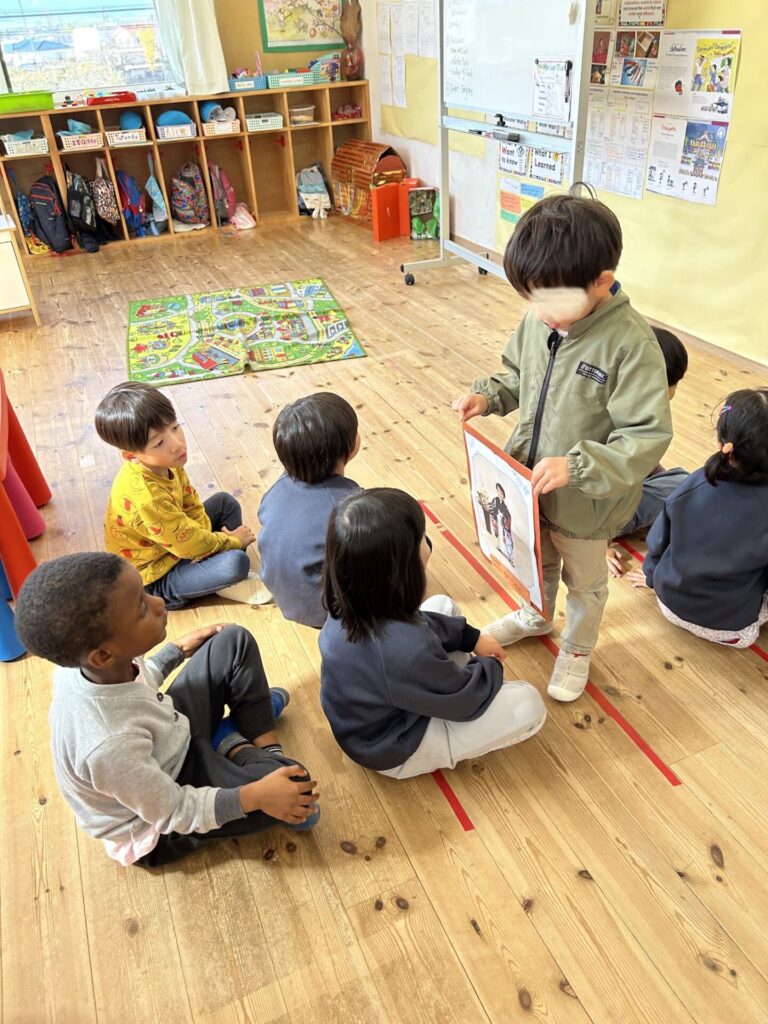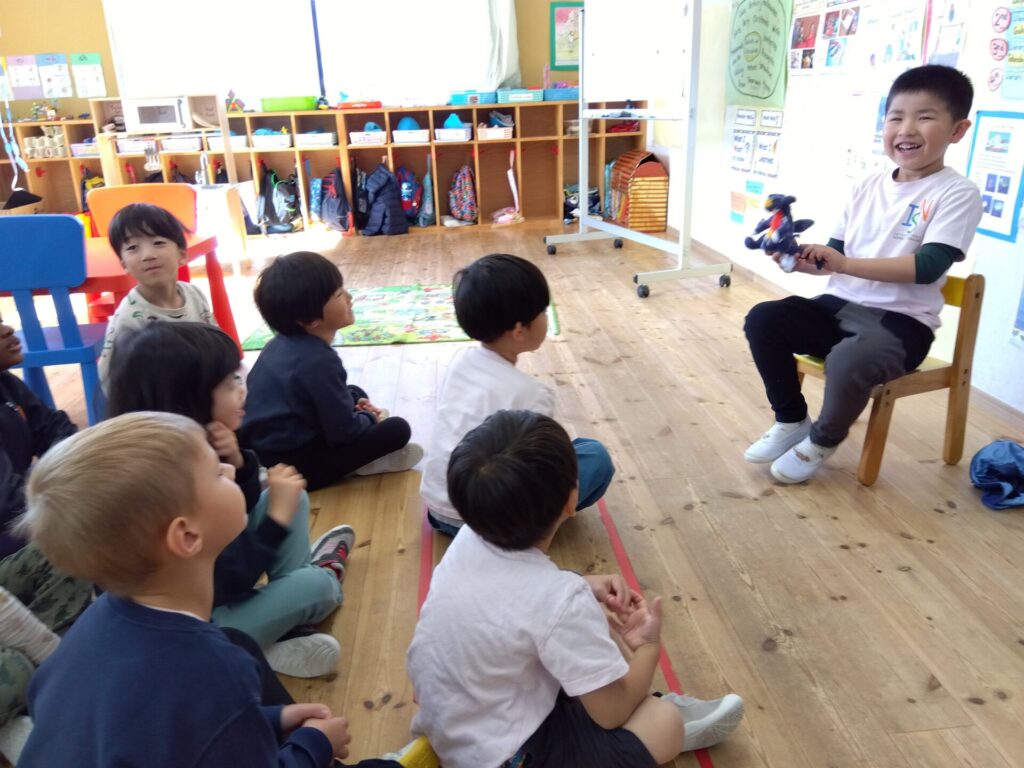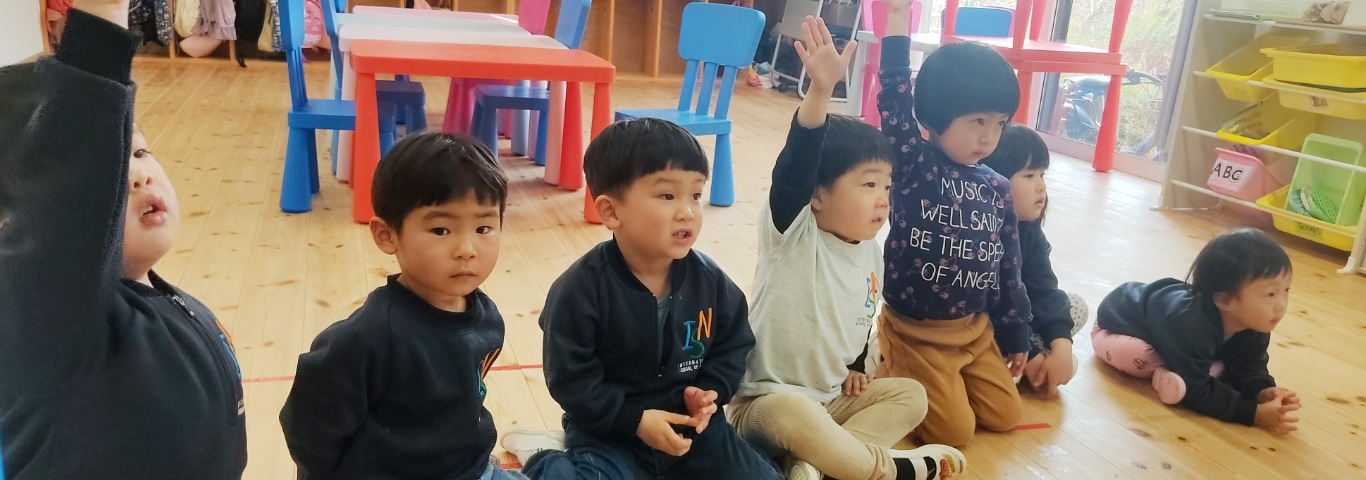One of our non-Japanese Rainforest student asked “what is Setsubun?” Many hands shot up. It’s about Oni. It’s about throwing beans. Oni can be red or blue. They are scary! We learned about Setsubun from one another, from books, and the internet. We used kiddle.co – a safe visual search engine for children. https://www.kiddle.co/
We found out more about ehomaki, which has 7 ingredients related to the 7 gods of good fortune. Typical ingredients include kampyo (dried gourd), cucumber, shiitake mushrooms, tamagoyaki (rolled omelet) and eel, which represent prosperity, good health and happiness. We made our own paper ehomaki and ‘ate’ them in class facing a lucky direction We had fun pretending!
https://www.japanjournal.jp/society/traditions/pt202302031397.html
レインフォレストの外国籍の子から「節分って何ですか?」という質問に、多くの手が挙がりました。「鬼のことです。」「豆まきするよ。」「赤鬼や青鬼がいるよ。」「鬼は怖い!」など、沢山答えてくれました。私たちは、お互いに、本やインターネットを使って節分について調べました。子ども向けの安全なサーチエンジンkiddle.co – を使いました。https://www.kiddle.co/
七福神にあやかって7つの具材が入っている恵方巻きについて調べました。代表的な具材は、かんぴょう、きゅうり、しいたけ、玉子焼き、うなぎで、繁栄、無病息災、幸福を表しているそうです。自分たちで紙で恵方巻きを作り、縁起の良い方角を向いてクラスで食べる真似をしてみました。

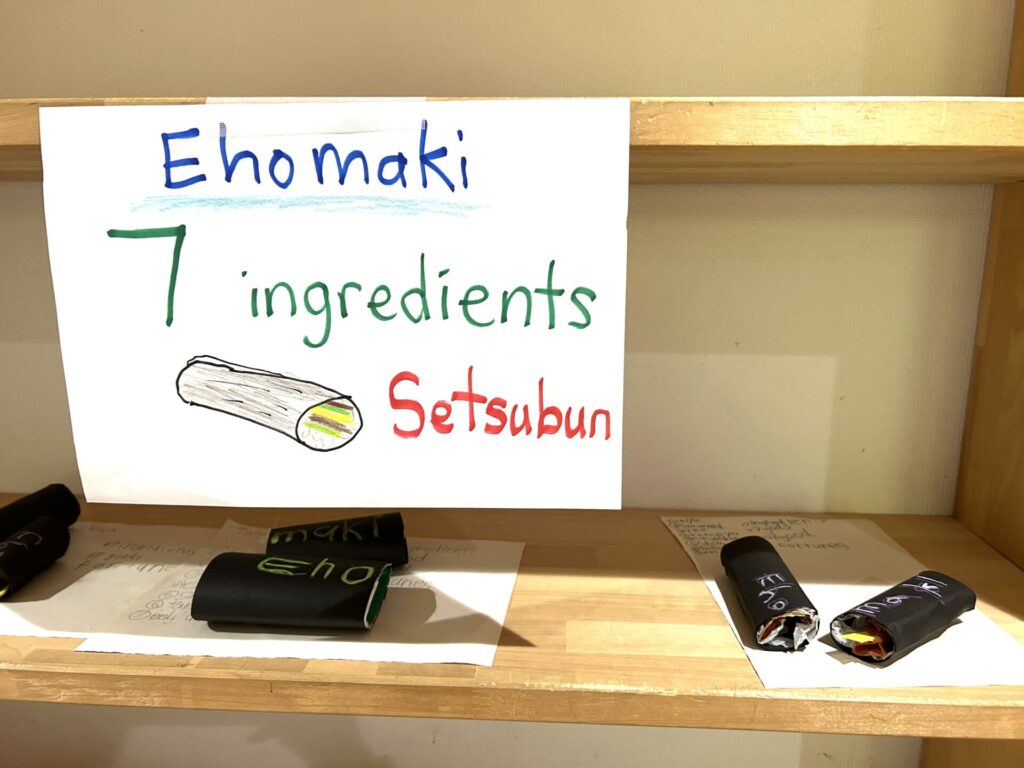
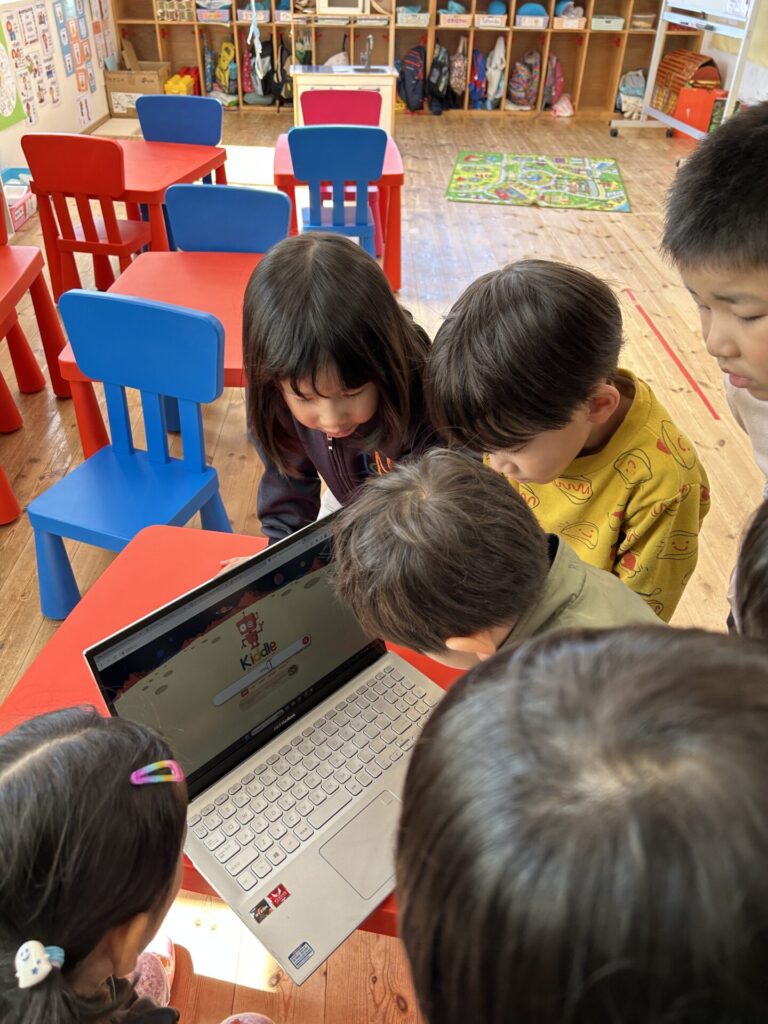
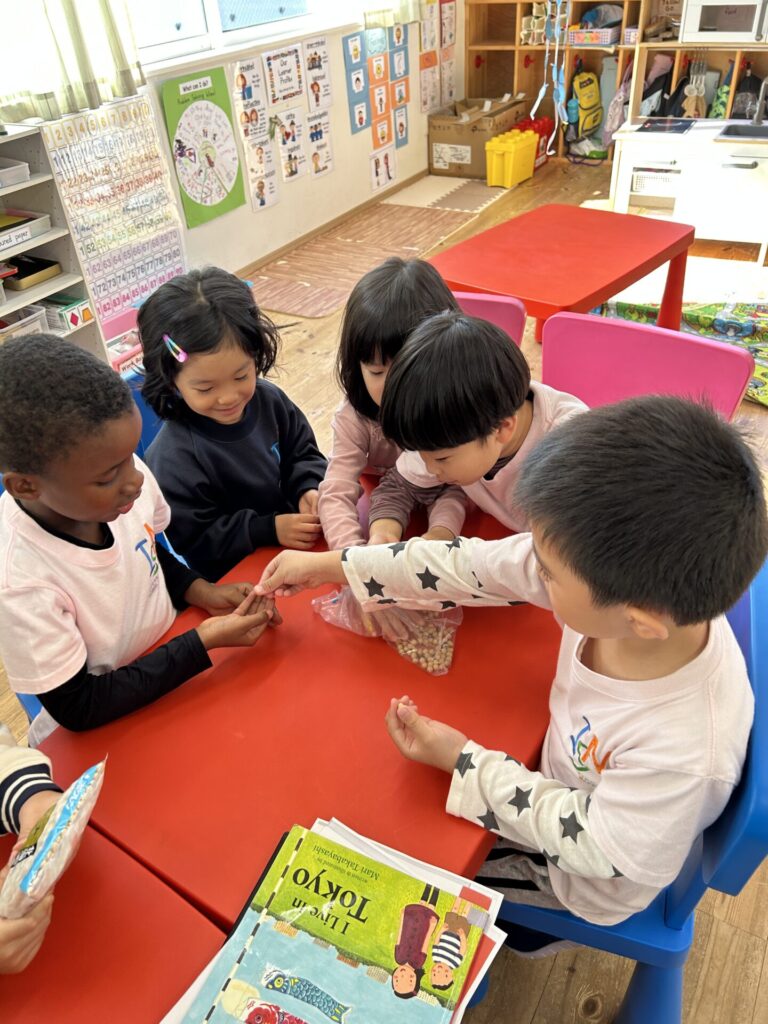
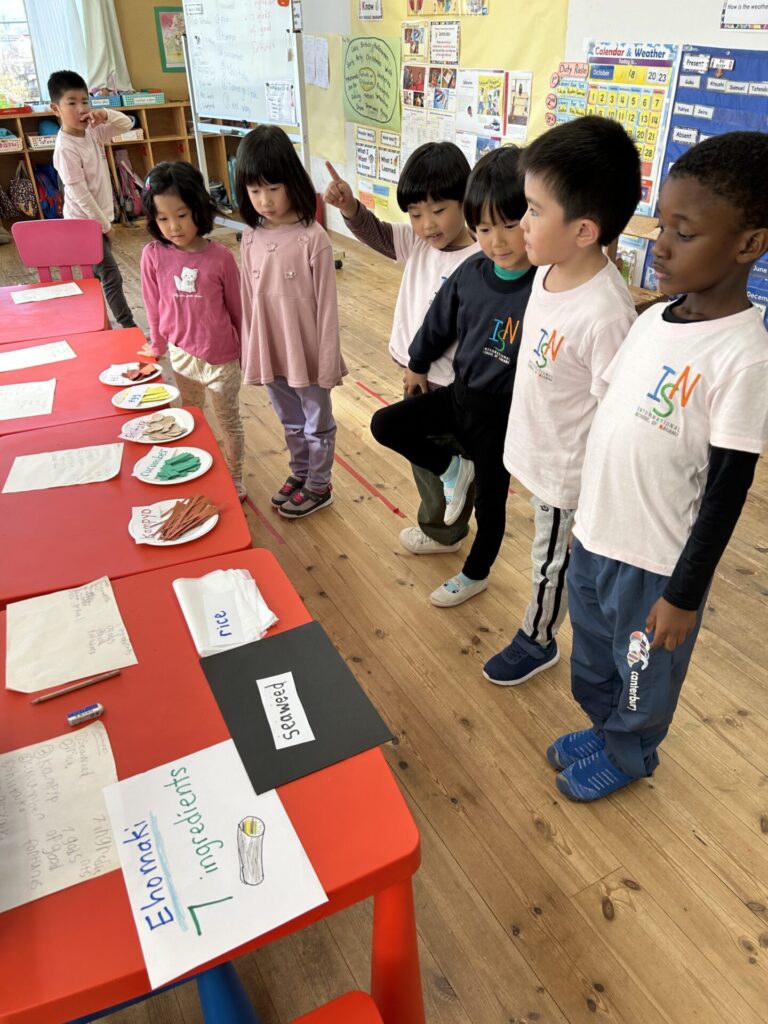

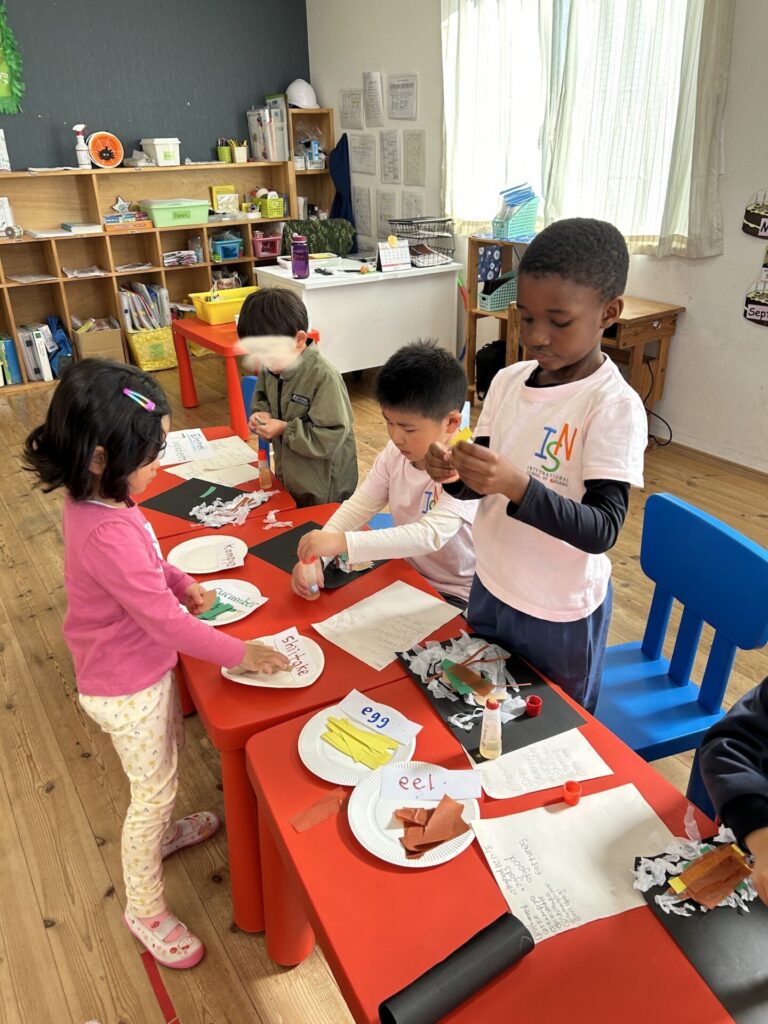
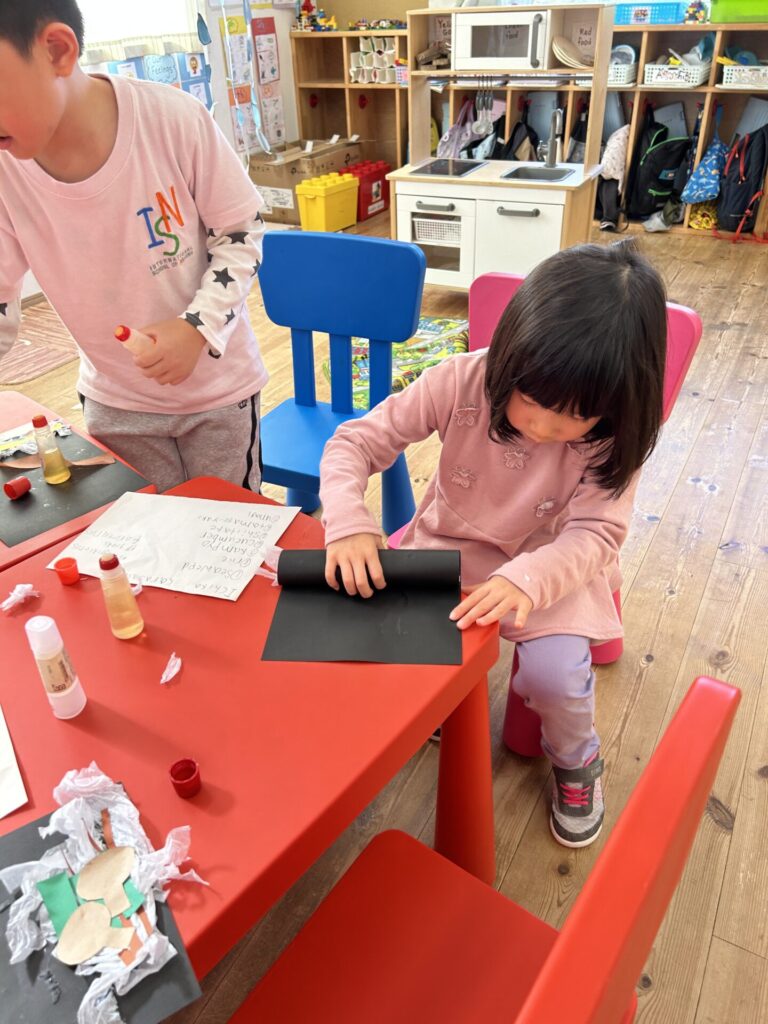

We watched a Kyoto Shrine Setsubun Festival held at Mt Otokoyama. We found out that they call out ‘Oni Yaro’ instead. Rainforest said, “But we say it different, Oni wa soto. Fuku wa uchi!” So we linked that to our central idea – even the same festival can be alittle diffrent in other parts of Japan. That was an insightful learning point for us. So it is similar, but different too! Well said, Rainforest! Throughout this line of inquiry, we will find out more about such differences and accepting them as part of the Japanese culture too.
Watching the video, we saw 4 orges (we learned another name for demon, oni) entering the shrine and how the priests and priestesses threw soy beans at the orge. Rainforest have been good Inquiriers and have been Open-minded in this line of inquiry – our IB Learner Profiles for this unit. Ms Chisaki read to the class a Setsubun kamishibai – the origin of setsubun and mame-maki bean throwing.
男山で行われた京都神社の節分祭を見ました。「鬼は外」と言うのではなく「鬼やろう」と言うそうです。子ども達は「私たちは、鬼は外。福は内と言うよ。同じお祭りでも、日本の他の地域では少し違うことがある。いいところに気がつきました。探究の流れ1を通じて、このような違いについてもっと知り、日本の文化としても受け入れていくでしょう。
ビデオでは、4匹の鬼(鬼の別名、オニ)が神社に入っていく様子や、神職や巫女が鬼に向かって大豆を投げる様子などを見ました。レインフォレストは探究心が旺盛です。節分に関する紙芝居を3話みました。節分の由来や、どうして豆をまくの?というお話を興味津々に聞いていました。
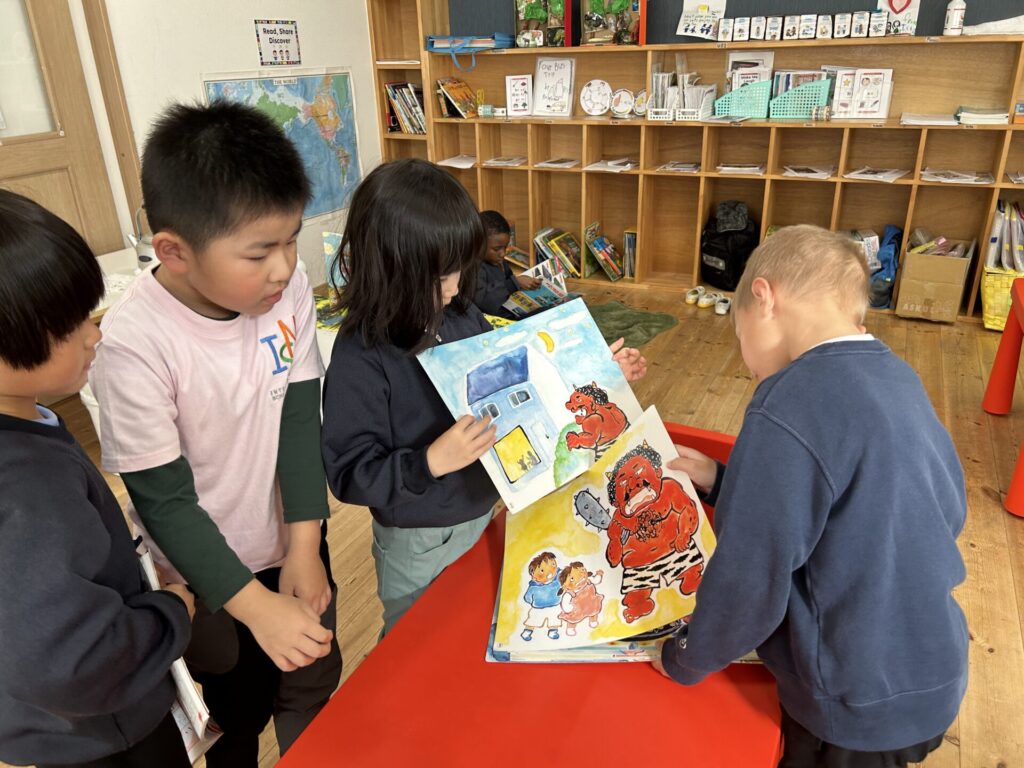
We had a good round of Show and Tell sessions. This is spontaneous and students will ask if they could bring a book, a toy or an item from home to share with the class. This helps build confidence in speaking to a group. More importantly, the child is motivated to share about something he or she likes. They are not compiled to speak English but because they want to share their interests and opinions. There are some ground rules. Firstly, they will have to ask Mum or Dad if the item can be brought to school. Then share 3 points about the item. What it is called? Why you like it? Where you got it from? We will have a comments and questions session after too. The presenter starts with “Good morning class. Today I have…” and lead the rest of the session. To close, “Thank you class for listening” and the class replies, “Thank you for sharing.”
The class is very excited about our Halloween Party. The event will be updated next week. Till next week, hope you had a fabulous Halloween Party and have great weekend!
自分がお友達に見せたい物を披露するショーアンドテルが人気です。お家にある本やおもちゃを持ってきて、クラスメートに見せてくれます。これは、人前で話す自信をつけるのに役立ちますね。さらに重要なことは、子どもは自分の好きなことについて分かち合いたいという意欲を持っていることです。英語を話すためではなく、自分の興味や意見を分かち合いたいからです。ショーアンドテルには、基本ルールがあります。まず、その品物をスクールに持ってきてよいか、お父さんかお母さんに尋ねます。そして、クラスメートに披露する物の3つのポイントを共有します。名前は?なぜそれが好きなの?どこで手に入れたか?この後、コメントと質問の時間も設けます。発表者は「おはようございます。今日は……」で始まり、ショーアンドテルを進行します。最後に、”Thank you class for listening “と言うと、クラスメートは、 “Thank you for sharing “と嬉しそうに答えてくれます。
子ども達はハロウィーン・パーティーをとても楽しみにしています。イベントの様子は来週に乞うご期待!素敵な週末をお過ごしください!
